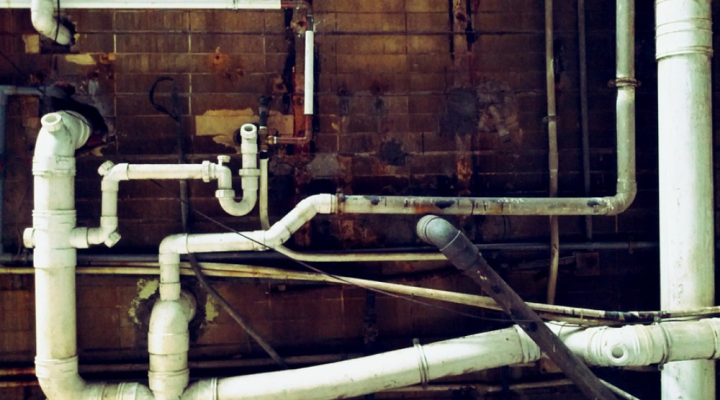
Plumbing repairs depend heavily on the pipes used. Each material and design offers advantages and disadvantages, which should be carefully considered when choosing a type of pipe for repair work.
Choose your pipes carefully: from traditional materials such as cast iron and copper to modern options like PVC and PEX – their selection can have a significant effect on a system’s durability and maintenance needs, but certain varieties present more significant difficulties during repairs due to material composition, age, location or the nature of damage.
This post will delve into the different kinds of pipes and explore which ones are notoriously difficult to repair. If you require pipe repair, maintenance, or installation, visit the top plumbing contractor in Mount Vernon, WA.
What are the different types of pipes used in plumbing?
As part of understanding pipe repair, it’s crucial that we become acquainted with all of the various materials utilized for plumbing; below is a list of these pipes – each material having unique properties and applications in this field.
- PVC (polyvinyl chloride) pipes: Frequently used for residential plumbing drains and main water supply lines. They are lightweight and easy to work with.
- PEX (cross-linked polyethylene) pipes: Known for their flexibility and resistance to both extreme hot and cold temperatures, these are often used for interior water supply lines.
- ABS (acrylonitrile butadiene styrene) pipes: Similar to PVC pipes but more frequently used in vent and drain lines.
- Copper pipes: Highly durable and resistant to corrosion, these are commonly used for water supply lines.
- Galvanized steel pipes: Once common in homes for water supply lines, these are now less used due to the risk of rusting.
- Cast iron pipes: Primarily used for waste pipes and drain lines, but they are heavy and can be difficult to work with.
- Lead pipes: Now largely phased out due to health concerns, but still found in some older homes.
- Polypropylene pipes: Often used in high-temperature, high-pressure situations like in hot water distribution.
- Stainless steel pipes: These are robust and resistant to corrosion, but they are also the most expensive type.
- HDPE (high-density polyethylene) pipes: Commonly used in larger applications, such as sewer systems and water mains. They are known for their high strength-to-density ratio.
Which types of pipes are most difficult to repair?
Let’s delve deeper into the intricacies of pipe repair by examining a list of pipe types ranked in descending order of their repair difficulty, starting with the most challenging.
Lead pipes
These are the most difficult to repair. Due to health reasons – many plumbers prefer replacing these older pipes rather than attempting to repair them. This is also due to their increased risk of being damaged during repair processes.
Cast iron pipes
Heavy and difficult to work with, cast iron pipes require special tools and knowledge in order to repair them effectively, making the repair process both costly and time-consuming. Additionally – their susceptibility to corrosion compounds this difficulty even further.
Galvanized steel pipes
As with cast iron, galvanized steel pipes are susceptible to rust and corrosion, making repairs challenging. Furthermore, their weight and rigidity make them harder to handle than some of the lighter, more flexible options.
Copper pipes
These pipes are resistant to corrosion, but any repair work requires soldering, which can be a complex task requiring specialized tools and training.
Stainless steel pipes
While these pipes are resistant to corrosion, their high cost can make repairs expensive. Plus, similar to copper, repairs often involve soldering.
Polypropylene pipes
These pipes are relatively durable and resistant to temperature fluctuations, but their use in high-pressure, high-temperature situations can make it challenging to carry out repairs without disrupting service.
HDPE pipes
Their high strength-to-density ratio makes them robust and durable; however, their large size can make repairs more difficult and potentially require specialized equipment.
ABS pipes
As they are similar to PVC, they are relatively easy to repair, but their common use in vent and drain lines could involve working in more challenging locations.
PVC pipes
These are generally easy to repair due to their light weight and ease of cutting and fitting, although the quality of the repair can depend on the skill of the plumber.
PEX pipes
These are the easiest to repair due to their flexibility and the simple nature of the fittings. Plus, they’re resistant to both extreme hot and cold temperatures, which can simplify the repair process.
Most difficult pipes to repair — Conclusion
In conclusion, the challenge of pipe repair hinges largely on the type of pipe in question. While modern options such as PEX and PVC offer greater ease and cost-efficiency in repairs, traditional materials like lead, cast iron, and galvanized steel can present significant difficulties and expenses.
It is crucial to consider these factors when dealing with plumbing repairs or when choosing the materials for a new system. Always consult with a qualified plumber to make informed decisions that balance durability, safety, and maintenance needs.
Leave a Reply